You are planning a trip to Tokyo, and are not sure which month you should go in. Everyone says that the Sakura festivals are great in the spring and you can only climb Mount Fuji in the Summer.
The Autumn Leaves are amazing during the ending of September thru early November, and the holiday lights are beautiful during the winter seasons. But what is Tokyo weather like throughout the year?
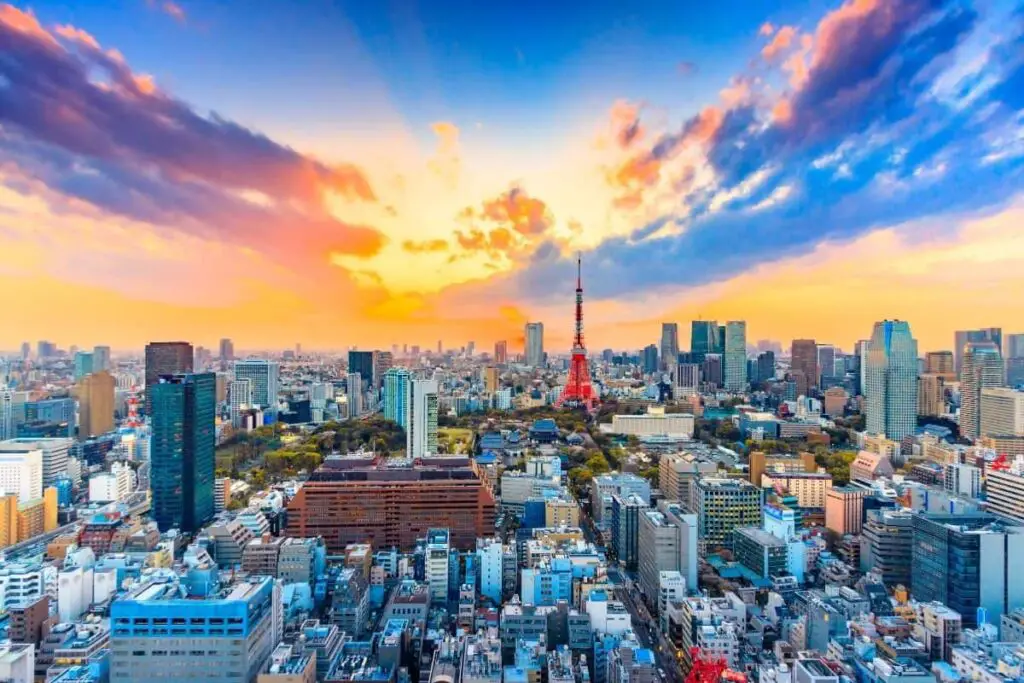
Chart Detailing Tokyos Averages By Month
| Month | Daily Highs And Lows (Fahrenheit) | Average Days Of Rain | Average Days Of Snow | Weather Notation |
| January | 50° / 37° | 3-4 | 1-2 | Light Snow Possible |
| February | 50° / 34° | 5-7 | 2-3 | Up to 1 Inch of Snow is more likely |
| March | 56° / 41° | 12-14 | 2-3 | Light Snow Possible |
| April | 66° / 50° | 10-12 | 0 | Sakura Season Begins warmer days |
| May | 74° / 59° | 10-11 | 0 | Spring Tourism Increased Warmer days and night |
| June | 78° / 66° | 11-12 | 0 | Humidity Slightly Increased |
| July | 85° / 73° | 10-12 | 0 | Rainy Season Thru 20th |
| August | 88° / 75° | 8-10 | 0 | High Humidity And Extreme Heat |
| September | 81° / 69° | 10-12 | 0 | Rain Can Be Frequent |
| October | 71° / 58° | 11-13 | 0 | Decreased Humidity And Cooler Temperatures |
| November | 62° / 49° | 9-10 | 0 | Autumn Temps Arrive With Cool Days and Colder nights |
| December | 54° / 39° | 8-9 | 1 | Light Chance Of Snow Towards The End Of The Month |
Keep reading for a month-to-month breakdown of what kind of weather you can expect in the month you decide to visit Tokyo and be well prepared for your exploration of this amazing city.
January in Tokyo is Sunny But Cold
Despite being the month with the most sunny days, January is the coldest month of the year. It can snow up to 4 inches per year in Japan during the winter months, but there are many years when you won’t see any snow at all.
The air is usually very dry in Tokyo in January and the average temperature is a little under 50℉ (daytime temperatures) as the high with the low being around 37℉.
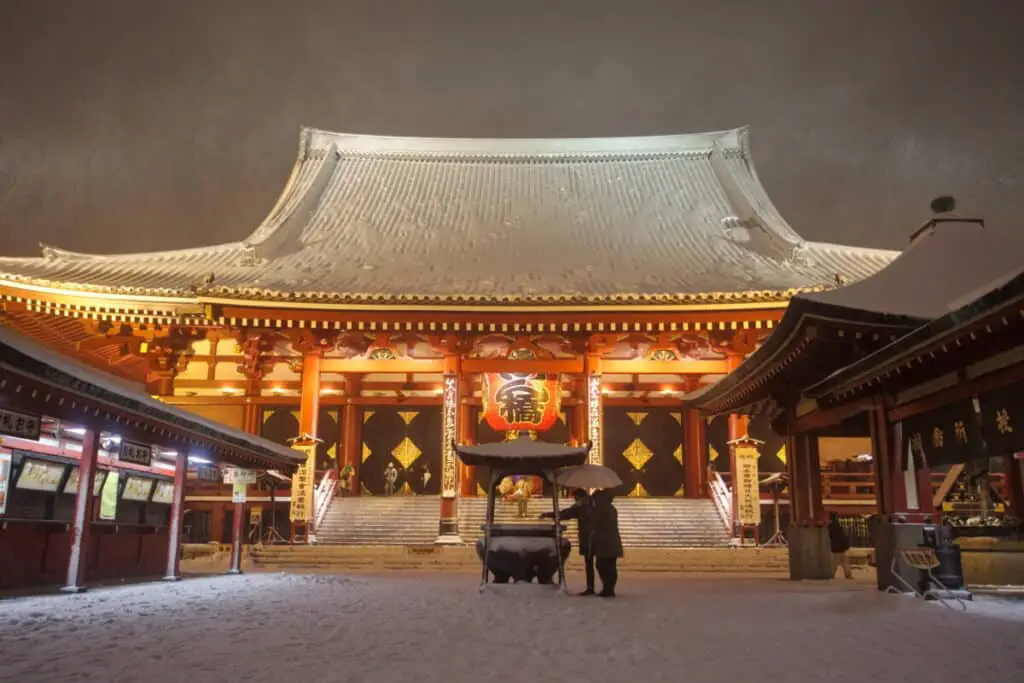
Tourism is usually down during January, but if you go near the beginning of the month, you may catch the Hatsumode, or New Year Holidays, shrine visiting activities that are popular during this time.
February in Tokyo is the Month You See Snow
February is a warmer month than January, but it is the month where you are most likely to see snowfall. Unfortunately for snow lovers, snow rarely accumulates to more than a light dusting to the ground in Tokyo, but it is still an exciting time for the residents.
The average temperature in February is about 50℉ high with a low of about 34℉. Tourism is usually down during this month as well and there are not many festivals or traditional events to attend to.
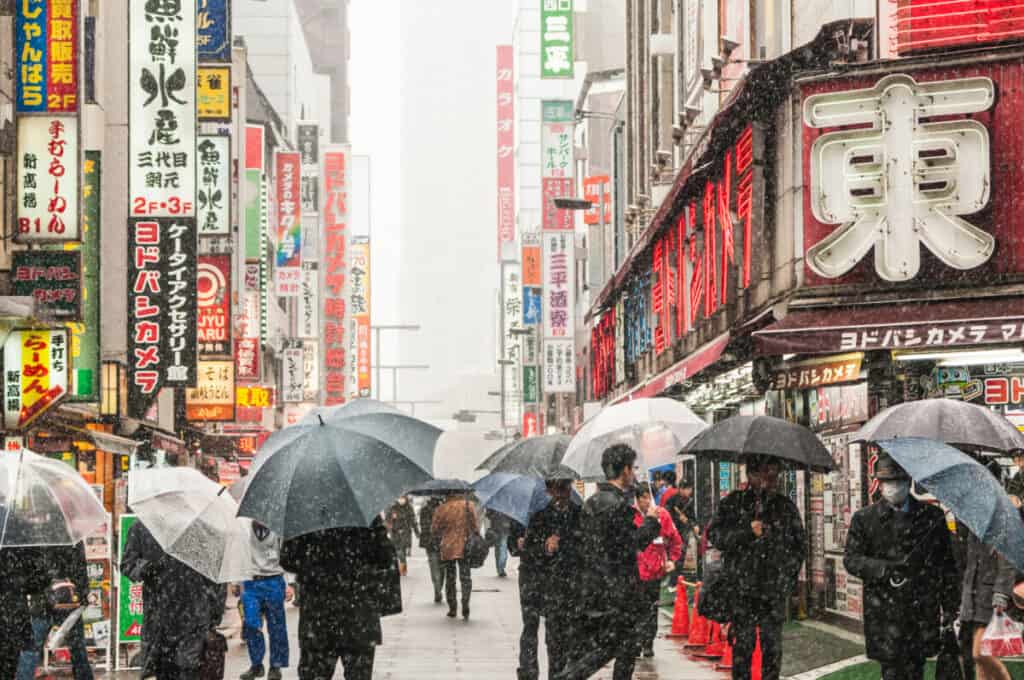
For people who are interested in seeing the Imperial Palace, however, the Emperor gives a speech for New Year’s on the 2nd of February every year.
March in Tokyo Produces the First Cherry Blossoms of the Year
If you are thinking of visiting Japan, late March is one of the most beautiful times to explore. As the weather starts to warm up a bit, the start of cherry blossom, or sakura season, begins.
The trees turn either white or pink with cherry blossoms and you will see groups of people in the parks having, what they call Hanami gatherings, which literally means flower viewing gatherings or festivals.
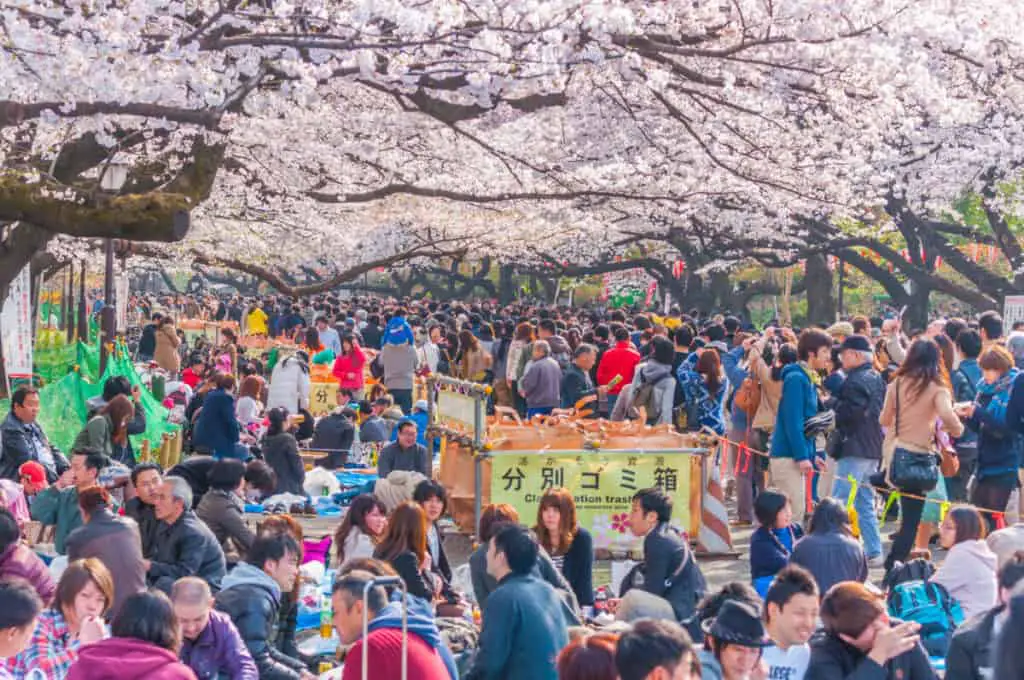
At about 56℉ as the high and 39℉ as the low in March, it can still be cold, but the weather can surprise you so it is the best practice to bring outer clothes and jackets that you can easily put on or take off if you are planning to attend a Hanami party as the afternoons can warm up in the full sun.
April In Tokyo is When Spring is in Full Swing
Spring is definitely in the air in April and is one of Tokyo residents’ favorite months of the year. The sakura trees are in full bloom and the Hanami gatherings, parties, and events last all month. It is not uncommon to run into a Hanami Festival during this month, so you may want to be ready for a side adventure or two.
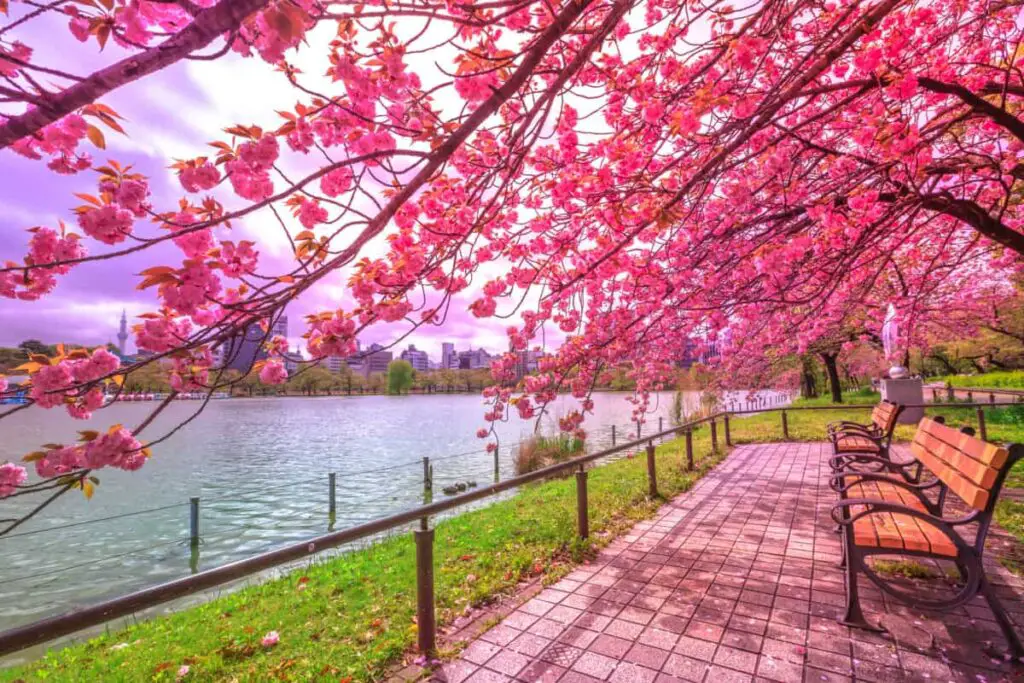
The crowds of tourists really start to pick up during April because of the beautiful Saruka trees. The high averages at a wonderful 67℉ with a chilly low of around 48℉ or so. Like March, the weather can vary, so it is good to be prepared just in case it gets cold.
May in Tokyo is the Golden Month
May is the month of Golden Week in Tokyo, as well as the rest of Japan and the festivities are everywhere. Residents of Japan are usually off work during Golden Week in the first week of May so that everyone can attend the Festivals and events that take place during that time.
Foreign tourism is usually down during this month but Tokyo residents, and residents of Japan, like to travel to Tokyo in May so it may still be crowded with locals and visiting Japanese in and around Tokyo.
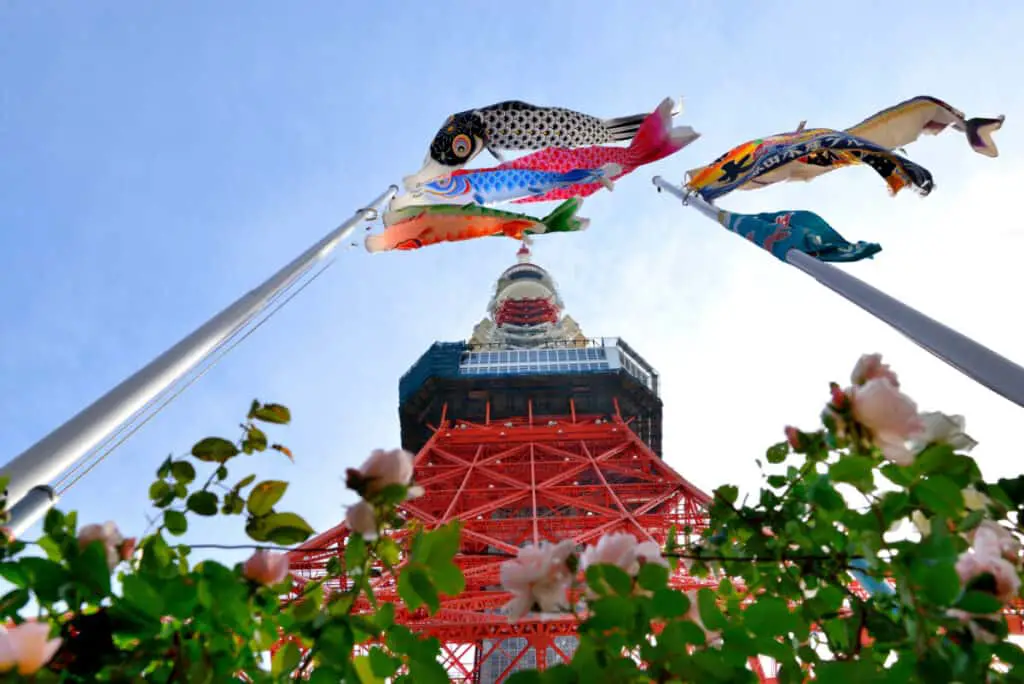
With an average high of 73℉ and an average low of nearly 60℉, this is one of the most comfortable months in Tokyo and a great month to experience Japanese culture.
June in Tokyo Bring on the Rain
Although June is steadily warm and has some very nice days, Tokyo, and Japan’s rainy season starts in the latter part of the month and lasts for about 6 weeks in total.
It is great for farmers and residents with rice fields, but tourism is usually down during June, making the prices for flights and hotels discounted at this point.
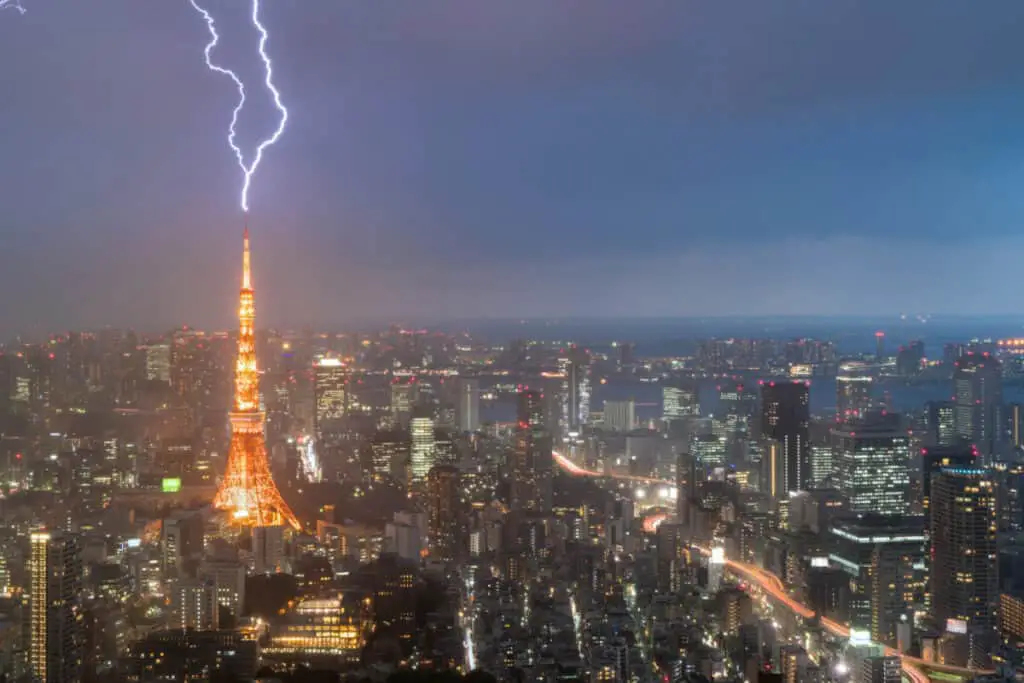
Most of the rain falls in the afternoon and usually doesn’t last all day, but if you aren’t a fan of rain, this may not be the time to visit. The high during the nice days is about 78℉ and the low averages at about 66℉, but it does look a bit darker outside for a larger percentage of the month because of the overcast skies.
July in Tokyo is the Start of the Summer Humidity
July is usually in the thick of the 6 week rain season in Tokyo and the rest of Japan, which ends soon after the 20th. The humidity from the end of June carries into July and the tourism is usually still low until around the middle to end of July.
With a high of about 85℉ and a low of 73℉, it is starting to feel like summer. The humidity does start to get a little uncomfortable at this point but, as the Tokyo kids all start their summer vacations, the prices for travel start to rise again.
If you find yourself in Tokyo at the end of July, the Sumida-Gawa Hanabi or Fireworks Festival in Asakusa is amazing to watch.
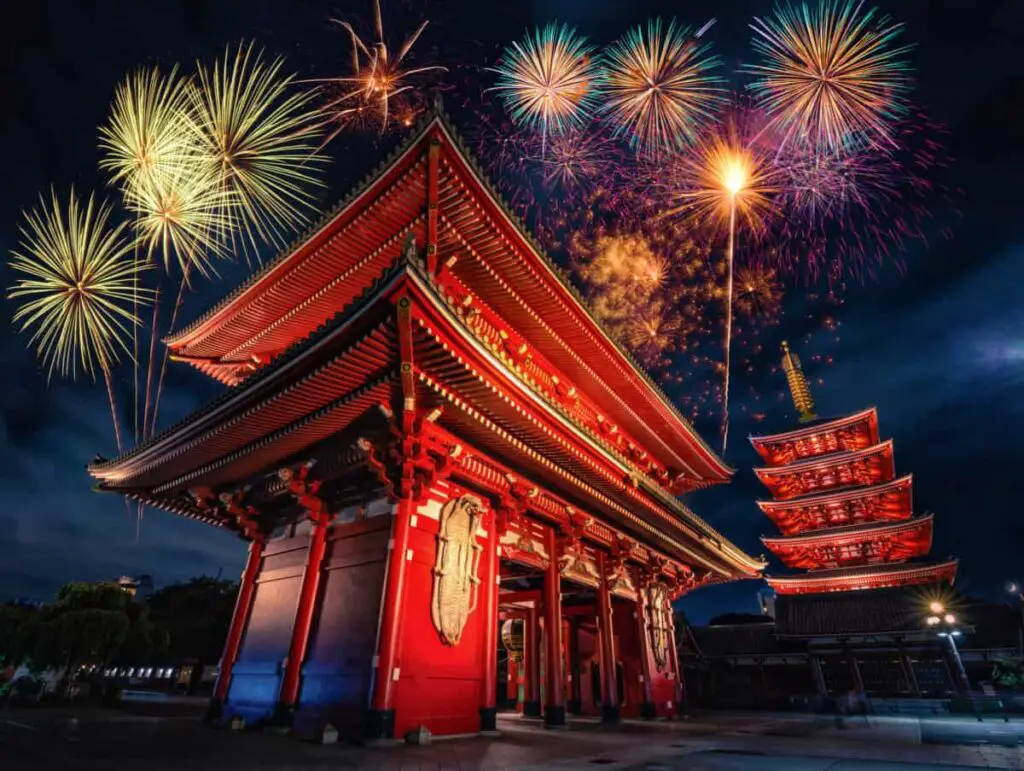
August in Tokyo is the Month of Festivals and Mount Fuji
There is no doubt that August is the hottest month in Tokyo and Japan as a whole. Not only is it hot, but it is also humid beyond belief on some days so you may find yourself ducking into one of Tokyo’s many convenience stores to get some cool air.
Despite the heat and humidity, Tokyo is alive with summer festivals that they call Natsumatsuri (summer festivals).
In August the average high is about 88℉ and the low is about 77℉. This may seem low to people who live in Arizona, USA for example, who have summers at about 115℉, but the humidity really plays a part in the uncomfortable level of heat.
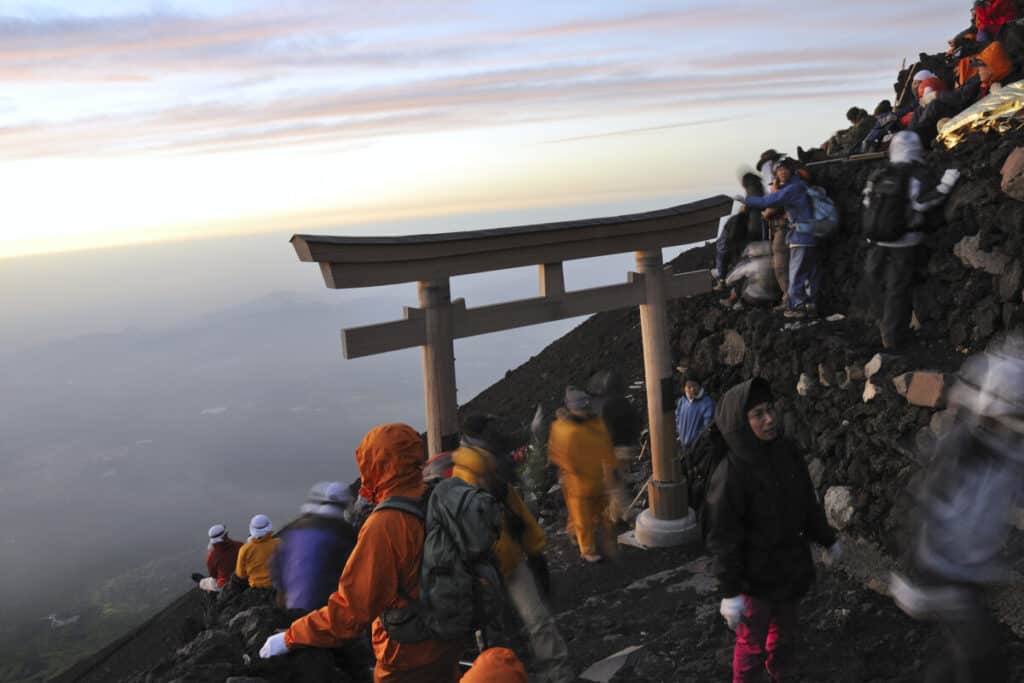
This is the best time, however, to climb Mount Fuji because the snow is usually melted at this point. If you can, do it. The views are amazing and the altitude on the mountain can be more comfortable than in the heat-retaining concrete and steel of Tokyo.
September in Tokyo is Warm and Sunny But Can Be Rainy Too
September still holds the humidity of August at the beginning of the month, but the moisture starts to dissipate towards the end.
Some years, September is warm and sunny and a great time to travel in and around Tokyo because the prices for flights and hotels are lower. In some years, September can rain more than June and July and become Tokyo’s wettest month.
With highs averaging around 81℉ and lows of around 70℉, September is a good time to just sightsee in Tokyo and just enjoy the culture.
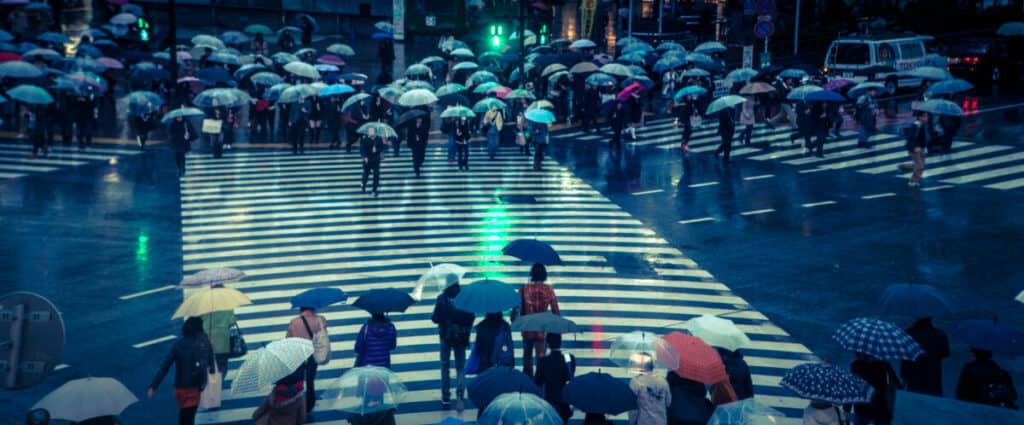
October in Tokyo Hosts the Start of the Autumn Leaves
Although not as nice as May, October is one of the most pleasant times of the year and a great time to travel. Like September, it can be a rainy time, depending on the year, but it is warm during the day, usually with a light jacket needed for nighttime adventures.
Towards the end of the month, the leaves start to change to their autumn fall colors so the temples and parks become popular places to visit and explore.
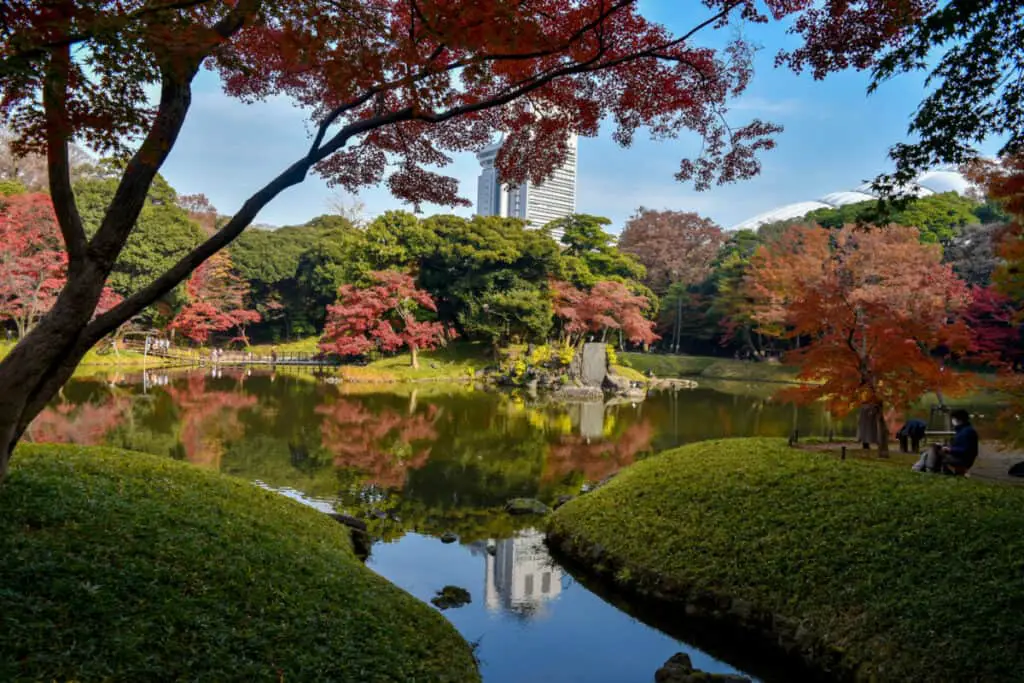
The amusement parks are also a popular choice of places to visit this month because some of them go all out with Halloween decorations and activities during the park’s after-hours. Daily highs and lows are 78F / 58F.
November in Tokyo Represents Everything You Love About Fall
With the autumn colors of the fall leaves in the trees and on the ground, the parks, temples, and gardens of Tokyo are where you want to be during the month of November. The weather is cool and usually sunny, and the air is finally completely dry from the summer humidity.
Tourism can pick up a little this month because of the fantastic color display of the autumn leaves, but it is still down compared to other months.
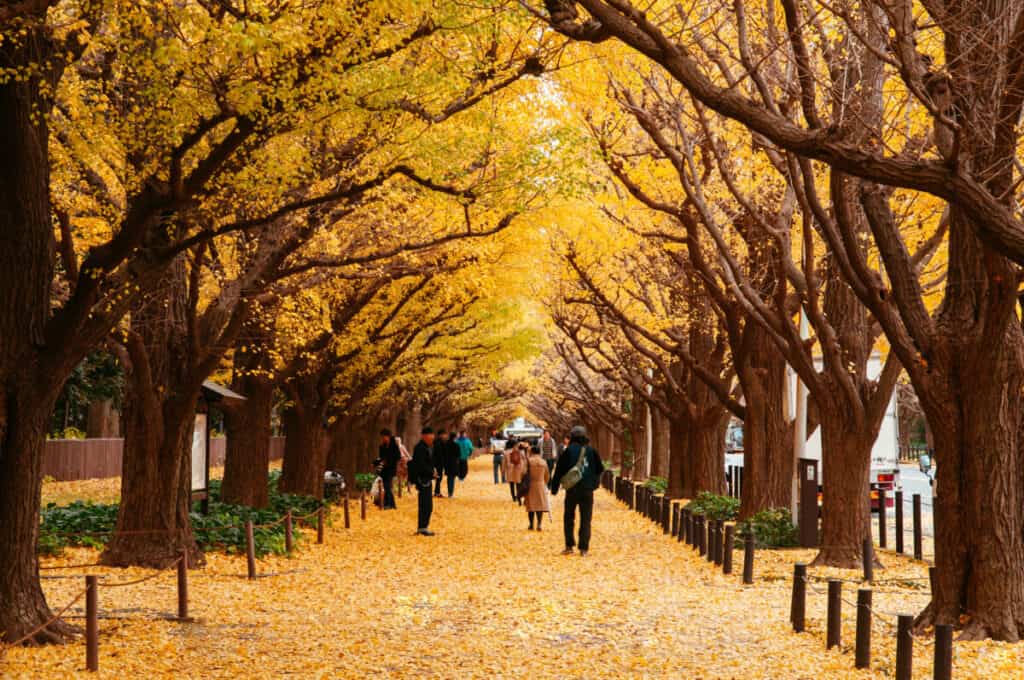
The high in November is usually somewhere around 61℉ and the low usually averages about 46℉, so you may want to bring a jacket if you going to be outside for a while.
December In Tokyo Ushers in the Winter in Style
Tokyo is an amazing place to visit during the winter months. The weather is usually cold and dry, but not as cold as the month of January. The local shops and retailers usually hold good sales to usher in the new year.
Tokyo also has some of the best Christmas lights displays in the world, so definitely plan for nighttime sightseeing.
Christmas in Japan is more of a couples day, like Valentine’s Day, and it is common to see amusement parks, like Tokyo Disney World or Disney Sea advertising great deals for Christmas for couples at the Amusement Park.
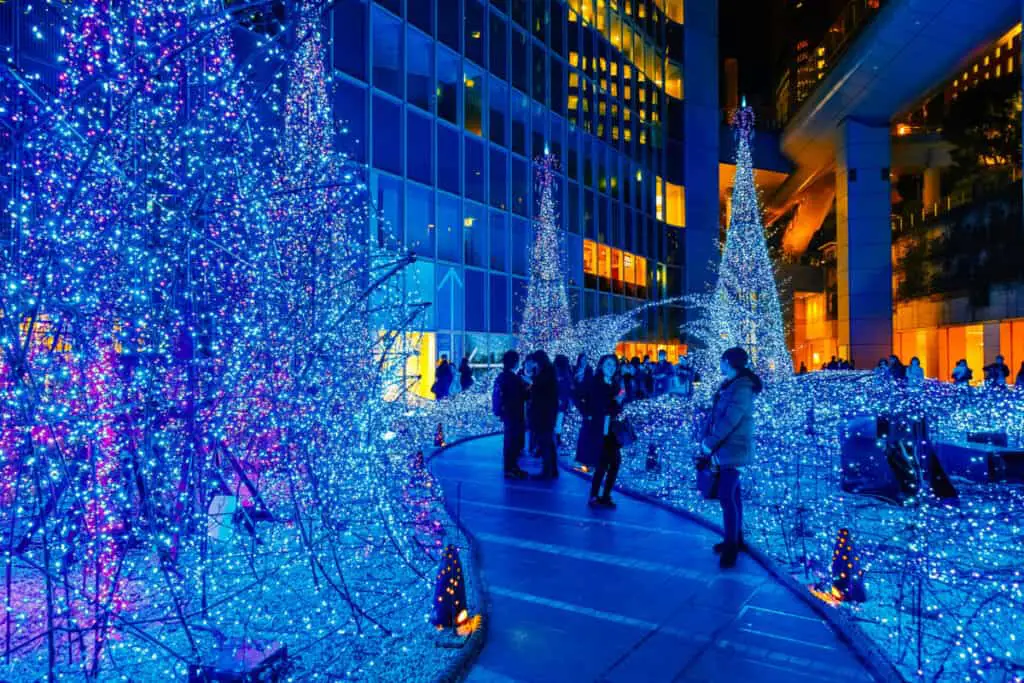
The high during December is usually dry and sunny, 54℉ on average with a low of 37℉. It is a great place to spend the holiday season, but if you are staying for the New Year, be prepared for some city businesses to close for about four days from the end of December to the beginning of January.
Japanese Meteorological Agency Official Website










